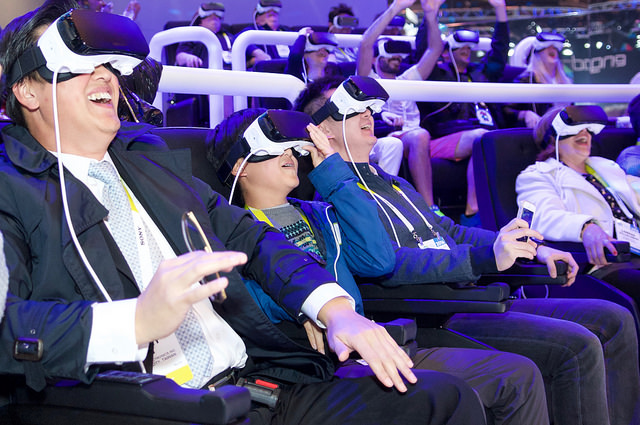ETC’s Virtual Reality Summit Dives Into the Business of VR
April 22, 2016
In a panel on the business of VR during ETC’s Virtual Reality Summit at NAB 2016, moderator Scott Lenet, president of Touchdown Ventures, asked panelists what will determine critical mass for VR. “All these new industries start with a lot of confusion over the right business model and technology,” said Reality Lab chief executive Halsey Minor, who is also chair/co-founder of Voxelus. “VR is right in the middle of that early confusing stage. But I do believe that this wave will move faster than any before it — by a longshot.”
The VR Fund general partner Marco DeMiroz agrees. “I think we’re getting there really fast,” he said, noting the huge growth of mobile games and PlayStation VR. Minor believes mobile will be the dominant platform. “In five years we’ll be sitting here and it’ll be 80 percent mobile,” he said. “Attaching yourself to a computer is a very backwards looking way of approaching a new industry.”
Springbok Entertainment chief executive/co-founder Brandon Zamel, noting that “we’re still establishing the language of what this medium looks like,” believes that immersive video has “un uphill battle,” because of the Netflix effect. “People want an all-you-can eat buffet, and this is expensive and not easy to monetize,” he said.
DeMiroz’s company monitors 500 different companies in the VR space. “We think competition is important in the industry,” he said. “We are looking at different layers of the ecosystem, from head-mounted displays and haptic devices to games and vertical solutions like entertainment and medical.”
With regard to the expense of making VR, Minor reports that his company is showing Quantum Leap, a VR camera that does real-time video in stereoscopic 4K; a new version will connect to cloud-based services and will sell for “well under $10,000.” “Our cloud will convert the data in all the formats to reach all the stream formats you need,” he said.
Not repeating the mistakes of 3D, said Zamel, is important for those involved in the nascent VR world. “With 3D, consumers were turned off by the poor post conversions, the cash grab,” he explained. “We risk the same thing with VR — but the stakes are higher. It’s so many different industries, so there’s more responsibility on us to educate the consumer base, to show them that this is worth their time.”
Zamel believes that, because so much money is coming from the marketing sector, the result is “a lot of bad VR.” “Because of the gold rush, a lot of people are offering to do it for next to nothing,” he said, noting that a good marketing piece with good stitching would easily cost $500,000 to $1 million.
Despite the fact that VR is in its early days — and that savvy entrepreneurs will keep their team small and their expenses down — DeMiroz reports that, “a lot of companies are getting funded. “We don’t know the adoption curve,” he said. “But if you survive and are nimble in your reactions to exogenous market forces, you can really build.”


No Comments Yet
You can be the first to comment!
Sorry, comments for this entry are closed at this time.